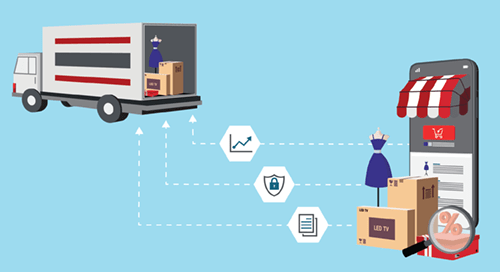APIs are a catalyst for digital business, but their rise in use has created a more complex IT infrastructure. The interfaces may have first been built to support a single line of business or a pet project. Since then, their role has expanded over time amid API growth, with many dependencies created in the IT infrastructure and division across various departments. While this scenario is acceptable on its own, it can make managing these APIs tricky.
In a recent webinar, Jaime Ryan — VP of Product Management for Amplify API Management Platform — raised a question that other industry leaders have asked:
Do today’s API marketplaces meet the needs to handle this explosive growth?
The answer is yes. Backed by the right management tools, API marketplaces hold the key to consumer adoption and enablement in an increasingly competitive and complex landscape.
API marketplace: a space to showcase and share your APIs
An API marketplace is the piece of the puzzle that makes APIs consumable. Within this user-friendly hub, individuals can quickly locate APIs relevant to their needs, learn about them, and use them to support their own initiatives. While this can fuel internal innovation, it also establishes a monetization model for APIs available externally.
In the past, API marketplaces were thought of in three respects, with each style of portal delivering benefits to a unique audience:
-
A simple catalog that saves IT teams time in registering and discovering assets while ensuring proper governance is maintained
-
An internal or external storefront for product managers that simplifies commercial management and treats APIs as a product with pricing and subscription services
-
A traditional developer portal that accelerates the onboarding of developers and creates a sense of community among these innovators
But siloes, as Ryan notes, stand in the way of API adoption. You are dealing with multiple development teams, different security mechanisms, multiple technology implementations, and a lack of visibility and linkage to outcomes. That’s why it’s beneficial to combine all of these variables under one roof.
“What you really need is a single API marketplace that addresses all of these use cases versus individual portals,” Ryan noted.
A glimpse into the modern API marketplace and its added value
In a survey of 300 IT and business decision makers, 71% of individuals reported that they didn’t experience the business results they had planned from API investments. On their list of objectives: improve the customer experience, secure the digital experience, and — you guessed it — increase API adoption.
Q. How do you avoid being part of that 71%?
A. Unify all of your API assets and manage their product lifecycle under one system — regardless of their pattern, deployment, or platform — so they are easy to discover and adopt.
With a centralized way to manage, secure, and define the value of your APIs, you’ll set the foundation for an API marketplace that delivers on its goals. Whether your consumers are internal or external developers — an audience apt to evolve over time — you’ll have the visibility and control you need to ensure consumers can realize the value of your APIs while accessing relevant data to track API performance metrics.
This strategic approach to API adoption serves business well, both in the short and long term. For instance, while partners may have an easy way to subscribe to your API marketplace now, they may want to add their own APIs to your marketplace in the future. With an API ecosystem already established, you can accommodate the needs of consumers in an efficient, secure manner that offers the same user-friendly experience.
API adoption is directly related to business growth
72% of those surveyed above said they expected digital business growth to increase if they could increase API adoption today. Moreover, on average, they expected 26% growth.
Considering the direct relationship between API marketplaces and API adoption, a centralized, comprehensive API marketplace is critical to achieving business goals.
How do you currently manage APIs?
Take a moment to consider your current approach to API management:
-
How do you discover and catalog unmanaged APIs?
-
Can you tell if your APIs are governed appropriately?
-
Are you treating your API as a project or as a product?
-
Can you articulate the business value of your APIs beyond direct monetization?
The answers to these questions can help you identify gaps in current API management tools and the value of a universal approach to overseeing your API marketplace.
Want to learn more? Get started with this quick checklist of 5 steps you can take now to drive API adoption with an API marketplace.














